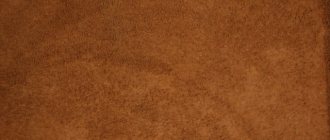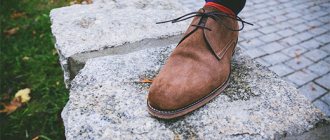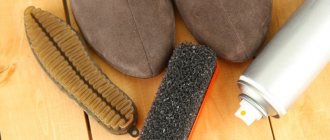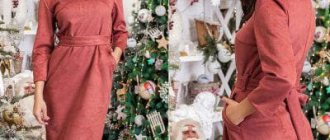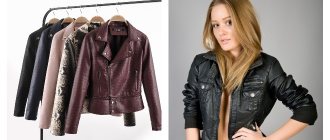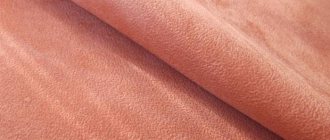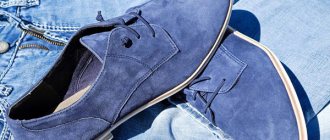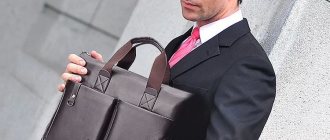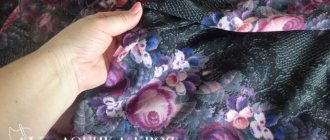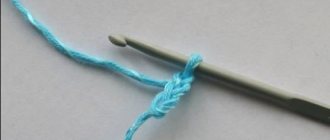Characteristics of natural suede
Suede is made from hides by fat tanning. The wool is cut from the base, then oiled and treated in a special way. At the end of the process, the oil is completely absorbed and becomes one with the skin proteins. Then the fabric is dyed, perforated, embroidered, quilted, and decorated with ornaments or designs.
The material has the following qualities:
- subtlety;
- strength;
- softness and silkiness;
- elasticity;
- resistance to deformation;
- the same texture of the back and front surfaces;
- porous structure that allows air to pass through and water to be absorbed.
Refined natural suede.
There are 2 types of suede: refined and non-refined. The first one allows air to pass through better and is characterized by increased softness and thinness. The second is denser and more wear-resistant, but more vulnerable to mechanical stress.
Properties and uses of suede
Depending on the original raw material, the properties of suede may differ slightly. For example, artificial varieties have a more uniform texture and bright color, but natural ones “breathe” and do not get wet.
However, they also have a lot of common pleasant qualities:
- wear resistance;
- durability;
- abrasion resistance;
- resistance to deformation;
- softness;
- elasticity;
- no shrinkage;
- attractive appearance.
Advice
To prevent artificial material from allowing water to pass through, treat the products with special water-repellent impregnations from time to time.
All these characteristics make suede an attractive material for the manufacture of a wide range of products:
- jackets;
- jackets;
- jackets;
- trench coats;
- dresses;
- boot;
- shoes, sandals;
- bags, wallets;
- men's and women's coats;
- skirts;
- gloves;
- hats;
- pillowcases for decorative pillows;
- covers and upholstery;
- wet wipes for washing car windows.
At the same time, the natural material, due to its ability to “breathe,” is comfortable even in the warm season. A jacket for a summer evening will be as hygienic and pleasant to the body as, for example, natural linen. But it’s better not to buy clothes made from artificial textiles such as dresses, skirts and trousers for the summer. It does not allow air to pass through, so it is completely unsuitable for heat.
Pros and cons of natural suede
Natural suede has strengths and weaknesses. Among its advantages are:
- Aesthetics. The material looks like genuine leather, so it looks expensive and elegant. It is suitable for making furniture upholstery and clothing in any style.
- Wear resistance. With proper care, suede retains its original appearance and other properties for a long time. Even when abrasions and other small defects appear, they remain invisible and do not damage the product.
- Good heat transfer. Suede retains heat in winter and cold in summer. This makes it suitable for making clothing and shoes.
- Comfortable to wear. Lightweight, porous fabric does not stick to the body and does not hinder movement. Thanks to numerous pores, the skin under suede clothing can breathe.
- Elasticity. The fabric stretches well and quickly regains its shape.
- Softness. The material is soft and pleasant to the touch, which is good for the production of clothing and furniture upholstery.
- Antistatic. The canvas does not accumulate static electricity.
Natural suede is a light and porous material, which ensures water permeability of the fabric.
Disadvantages of suede:
- Moisture intolerance. Unlike its artificial counterpart, natural fabric quickly absorbs liquid and takes a long time to dry. At the same time, its fibers absorb dirt and foreign odors. Even light rain can ruin delicate suede clothing. In addition, problems arise when washing.
- Low strength. Suede is quite easy to tear. It is better to keep pets away from furniture, bags and clothing made of this material.
- Vulnerability to pollution. Suede items get dirty easily, especially if the fabric is light in color.
- Difficult to care for. Delicate suede products cannot be washed by machine or hand. They require regular dry cleaning and additional care to maintain a presentable appearance.
- High price. Natural suede is more expensive than its artificial counterpart and most other fabrics.
To eliminate shortcomings, suede products are sometimes subjected to chemical treatment - for example, coated with water-repellent compounds.
Basic properties of suede
Thanks to modern production technologies, suede fabrics are practically not inferior in quality to their natural prototype, and in many ways surpass it and have only positive reviews:
- have high wear resistance;
- do not wear out;
- does not stretch;
- thanks to the Teflon coating, they do not absorb liquids and dirt;
- very soft to the touch;
- depending on the chosen base, they can be elastic (on spandex);
- do not fade;
- do not shrink;
- do not wrinkle;
- they do not show scratches or creases, unlike natural suede;
- have a more uniform color than their natural counterpart.
One of the characteristics of modern eco-suede is the “writing effect”, which is typical for natural suede. That is, if you run your hand over its surface, the fibers will change their position and leave a mark.
How it is faked
Artificial suede is produced in two ways: microfiber threads are split (in the process they acquire a characteristic hairiness) or a hair coating is applied to the fabric using glue. The material produced using the first method is closer in its characteristics to the original. The second type of artificial fabric is short-lived and often has defects - bald areas, stuck together hairs.
Artificial suede is almost indistinguishable from real one.
Checking the naturalness of suede
There are many ways to distinguish natural suede from artificial one.
- Checking the appearance. Genuine suede, like any natural material, is heterogeneous in structure, thickness and color, and has small scratches, cracks, and creases on the surface. Artificial textiles are completely homogeneous.
- Smell check. The natural fabric emits a subtle but clearly recognizable aroma of leather. The artificial analogue either does not smell of anything or smells of synthetics and chemicals.
- Villus direction test. Suede hairs are soft and pliable, so they easily change direction if you run your finger over them. The skin becomes slightly darker or lighter. Counterfeits do not have this property.
- Water test. When wet, natural fabric instantly absorbs liquid and remains wet for a long time. The synthetic analogue repels the drop.
- Thermal conductivity test. You need to hold a piece of suede in your hand for 2-3 minutes. Natural material will quickly take on the temperature of the human body and will retain heat for a long time, while artificial material will remain cold.
- Inspection of the cut. The origin of the linen can be determined by examining the raw edge of the leather on the inside seams of the garment. With faux suede, it shows separation where the threads begin. Genuine leather is homogeneous and does not flake.
- Fingerprint test. The sample is held between the fingers and squeezed tightly. From natural material, fingerprints will disappear immediately (or will not remain on it at all), while on a fake material, traces will be clearly visible for a long time.
- Checking the inside out. Suede has the same fleecy structure on the front and back sides. If the reverse side of the fabric is made of cotton fabric or other inexpensive textiles, then the buyer is dealing with a synthetic analogue.
- Fabric bending. If you bend natural fabric strongly, it will completely restore its shape in 1-2 minutes. Artificial fabric is less flexible.
- Pile quality. The hairs on natural material are small, low, shiny and not loose. If they seem too long, have a broken structure, stick together and fall off when touched, then the buyer is faced with a fake.
- Price. Products made from natural suede are much more expensive than items made from artificial analogues.
Faux suede has a more uniform color and does not have any minor defects.
Most natural suede items will have a sample tag on them. On it, the buyer can carry out tests to establish the authenticity of the fabric, without fear of spoiling the product he likes.
Types of leatherette
Lacquer fabric is leatherette, which has a varnished surface. Used in the manufacture of raincoats, skirts, suits, jackets. Various designs are also used on this fabric to add style to the clothes. The advantage of varnish: it stretches well without changing shape, and stains are easily removed.
You can view photos and buy leatherette wholesale and retail on the website megatextil.com.ua. Delivery is carried out throughout Ukraine. We will also be glad to welcome partners from cities such as Kyiv, Kharkov, Dnepr, Odessa.
Another type of leatherette is suede. As an analogue, manufacturers have created flock fabric. It has become popular due to its quality and low price. The base consists of cotton and polyester. This base is considered very strong. The pile (flock) can be artificial or natural (cotton). Flock suede is soft to the touch, fireproof, and has several types. Suede is suitable for sewing shoes or accessories. By the way, cleaning suede products is very simple. It is enough to wipe the item with a damp sponge or buy special sprays for suede care. The crinkled “moiré” is suitable for decorating clothes, making toys, and packaging.
Alcantara is a type of artificial suede. The fabric is soft, velvety, and does not fray. There is virtually no waste when cutting. A very large range of colors and can be made with patterns. This material is patented and is therefore produced only by an Italian company.
Nubuck - made from synthetic raw materials, is wear-resistant and does not allow moisture to pass through. Therefore, seamstresses choose this material for sewing shoes. Nubuck is somewhat reminiscent of suede, although it has shorter fibers, it is stiffer and harder.
Fashion for leatherette
In the 2017-2018 season, leather fashion returns. To diversify products made from this material, manufacturers dye the fabric in any variety of colors and shades. They also use the technique of applying various textures and reliefs. At the same time, it is almost impossible to distinguish it from the original. That is, you can purchase fabric with a crocodile, reptile, leopard print or any other taste. A wide range is presented on the website of the Megatex online store. You can buy fabric wholesale at the price from the manufacturer!
Where to buy leatherette retail or wholesale from the manufacturer
In general, the qualities listed above make artificial leather an excellent “raw material” for sewing clothes, wallets, backpacks, and bags. For example, pants or a suit made of stretch leather will look very stylish. Haberdashery leather is used exclusively for sewing belts, key holders, and wallets. All these products will complement your look and emphasize your individuality. You can buy leatherette inexpensively on the website of the Megatex online store and make a wallet or purse with your own hands, because it’s very simple. To be sure of this, check it yourself. High-quality leatherette should spring back when pulled and be identical in thickness to natural leather. Gently run your nail along the front side to test the strength. Smell for any unpleasant odor. Any product must have a natural appearance, without streaks, without segments from coloring. It is prohibited to use alcohol, gasoline, or solvents on artificial leather products. For cleaning, give preference only to water-based products, then things will last longer.
Where is it used?
Suede leather is used in the textile industry and for clothing. Women's and men's jackets, jackets, coats, blazers, vests, and sheepskin coats are made from suede. In addition to outerwear, suede gloves, hats, berets, and scarves are produced. Things made of warm soft material are worn in autumn and winter.
Fleecy fabric is suitable for sewing both winter boots and summer sandals or demi-season boots, shoes, ugg boots, ankle boots, sneakers, loafers, sneakers.
Suede is used to make and decorate bags, cases, business card holders, and wallets. You can often find suede belts, bracelets, chokers with metal or other decor. Covers for sofas, armchairs, and car seats are made from this material. It is impregnated with special compounds that increase resistance to abrasion and damage.
In addition to sewing, suede is used in technical production for grinding lenses, cleaning optical surfaces, and making fuel filters. In addition, the material is suitable for the manufacture of orthopedic medical equipment.
Suede care
Rules for caring for suede items:
- It is advisable not to wear clothes and shoes made of suede in rain or in heat above +35 °C. If you still have to wear it, then before a walk it is recommended to treat the textiles with special sprays or creams.
- Natural fabric does not tolerate washing - dry cleaning is preferable. Small stains are wiped with a napkin to prevent them from spreading. Grease stains are sprinkled with talc powder and left for 2-3 hours. Persistent, extensive stains are sprayed with a mixture of ammonia and soapy water (proportion – 4:1) and treated with a soft brush. Salt stains are moistened in a solution of 9% vinegar.
- Suede shoes should be cleaned after every trip outside. If there is still wet dirt or sand on it, you should first wait for it to dry completely. For cleaning, a special brush with soft brass bristles is used. Any remaining stains after initial treatment can be removed with a damp sponge.
- Products should be dried at room temperature, preferably flat (for example, on a hanger). Do not leave suede items near a radiator, radiator or in direct sunlight.
- You should not iron suede clothes. Just straighten things out and leave them for 20-30 minutes – they will regain their shape. If necessary, remove wrinkles with a soft brush. To maintain the shape of the shoes, folded newspapers, cotton wool, fabric or special fillers are placed inside.
- Furniture covers are regularly treated with soapy water. After cleaning, wipe them thoroughly with a dry cloth or towel and dry them so that no traces of moisture remain. Then protective agents are applied.
In order for suede products to last longer, they must be periodically treated with compounds to nourish, moisturize, and restore color. This will help preserve not only the original appearance, but also the elasticity of things, and protect them from damage and wear.
